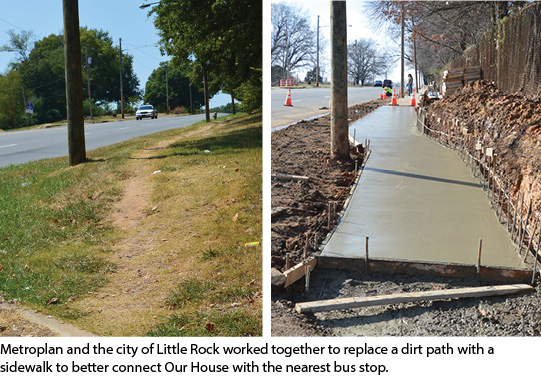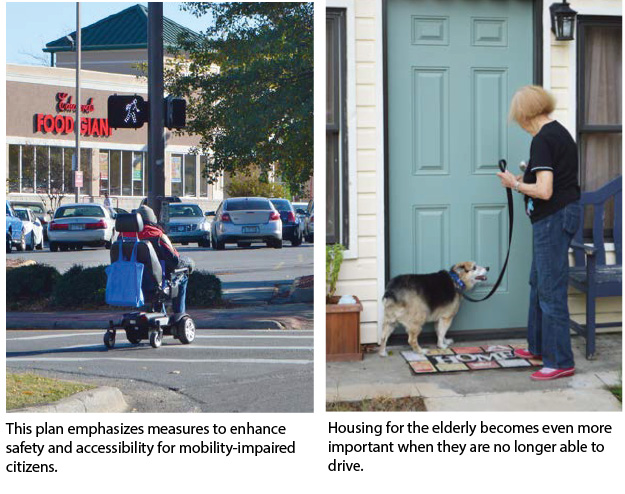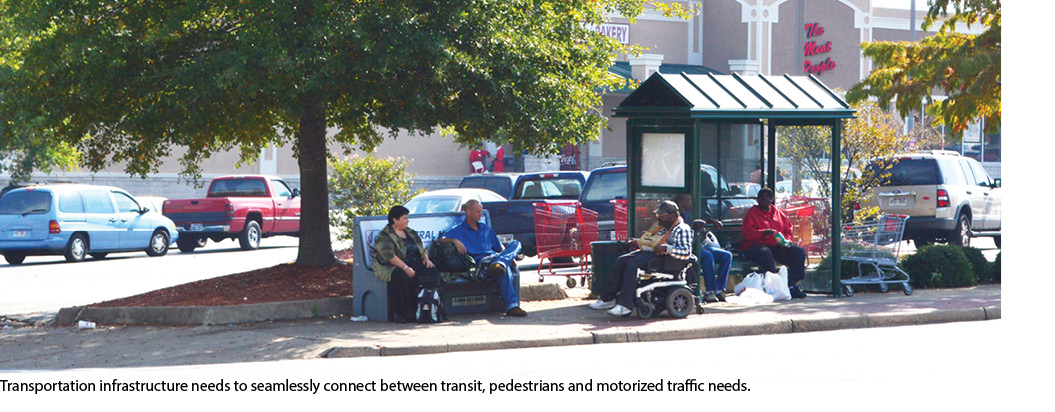1.
Make equity and accessibility integral to all Metroplan’s planning efforts through consistent and systematic, fair, just, and impartial treatment of all individuals.
Mobility & Accessibility
Mobility is defined as speed or ease of travel and has been the key measure of a strong transportation system. However, accessibility is more important for an equitable system.1 The difference between the two concepts is simple:
Mobility is how far you can go in a given amount of time. Accessibility is how much you can get to in that time.
Accessibility has long been equated with the Americans with Disabilities Act (ADA), first passed by Congress in 1990. This was pivotal in mandating minimum accessibility standards for the built environment and transportation systems. Access for people of all physical or mental capabilities is fundamental to ensuring a just and equitable transportation system and thus a key component of this core policy. Now, planning professionals realize the importance of creating accessibility for everyone to easily reach local amenities, be it the transportation system, parks, civic facilities, or essential services.
Accessibility in this broader sense requires an integrated view of transportation and land use since decisions made in one field will intrinsically affect the other. Planners and decision-makers must consider who takes trips, to where, and how they choose to travel. The underlying goal of any regional transportation system is to connect people to economic opportunity and quality of life, and accessibility is the way to measure the ease of reaching a destination, no matter how one chooses to travel.2
Equity
Equity in transportation planning means fairness in accessibility, safety, and modal options to meet the needs of all community members based on their unique needs and challenges. Metroplan’s Public Participation Plan (3-P) guides equity in our transportation planning process by considering equity early and often through public participation, data collection and analysis. This improves the planning process’s ability to adequately respond to the needs of the community it serves.

A central goal of transportation is to facilitate social and economic opportunities by providing equitable levels of access to affordable and reliable transportation options based on the needs of the populations being served, particularly populations that are traditionally underserved.
An equitable transportation plan considers the circumstances impacting a community’s mobility and connectivity needs, and this information is used to determine the measures needed to develop an equitable transportation network. To attain an equitable transportation network, all components of Title VI, environmental justice (EJ), and Nondiscrimination must be considered.
—USDOT, Coming Together for Equity4
Sources: 1 & 2 strongtowns.org/journal/2018/10/17/the-difference-between-mobility-and-accessibility.
3 & 4 [1][3] whitehouse.gov/briefing-room/presidential-actions/2021/01/20/executive-order-advancing-racial-equity-and-support-for-underserved-communities-through-the-federal-government/
EQUITY IN FEDERAL REGULATIONS
Executive Order 13985, Advancing Racial Equity and Support for Underserved Communities through the Federal Government (2021) defines equity as the “… consistent and systematic fair, just, and impartial treatment of all individuals, including individuals who belong to underserved communities.…” 3
Expanded Scope
The Bipartisan Infrastructure Law (BIL), includes provisions for housing considerations in the metropolitan transportation planning process. Added language includes integration of equity/accessibility considerations; specifically:
- Encouraging and promoting the safe and efficient management, operation, and development of surface transportation systems that will better connect housing and employment;
- Adding officials responsible for housing as officials with whom the Secretary shall encourage each MPO to consult;
- Requiring the metropolitan transportation planning process for a metropolitan planning area to provide for consideration of projects and strategies that will promote consistency between transportation improvements and State and local housing patterns (in addition to planned growth and economic development patterns);
- Adding assumed distribution of population and housing to a list of recommended components to be included in optional scenarios developed for consideration as part of development of the metropolitan transportation plan;
- Adding affordable housing organizations to a list of stakeholders MPOs are required to provide a reasonable opportunity to comment on the metropolitan transportation plan; and
- Encouraging the transportation planning process to address the integration of housing, transportation, and economic development strategies by developing a housing coordination plan.5


5 fhwa.dot.gov/bipartisan-infrastructure-law/metro_planning.cfm
